How to manage organizations and child organizations in ThreatLocker?
This document outlines the step-by-step process of how to manage organizations and child organizations in ThreatLocker Dashboard.
This article is a part of our ThreatLocker How-to Guides series, Chapter 09 – User and Device Management.
Introduction
ThreatLocker allows administrators to manage multiple organizations, including parent and child organizations, from a single portal. This enables centralized control, policy management, and streamlined administration across different business units or clients.
Implementation
Step 1: Access the Organizations Section
- Log in to the ThreatLocker Portal
- Navigate to Organizations from the left sidebar
- If you are in the parent organization, you will see a list of all organizations along with details such as:
- Organization Name
- Active Modules
- Billing Model
- Classification
- Number of Computers
- Creation Date
- License Method
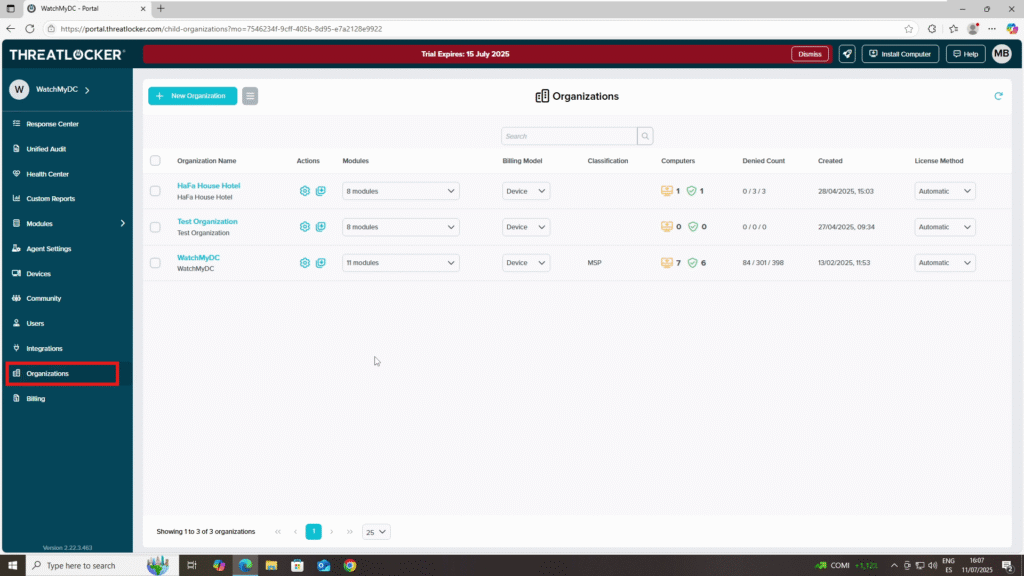
Step 2: Organization Management
- Editing Organization Settings
- Next to each organization, you’ll find a small settings icon.
- Click the icon to open the Organization Settings window
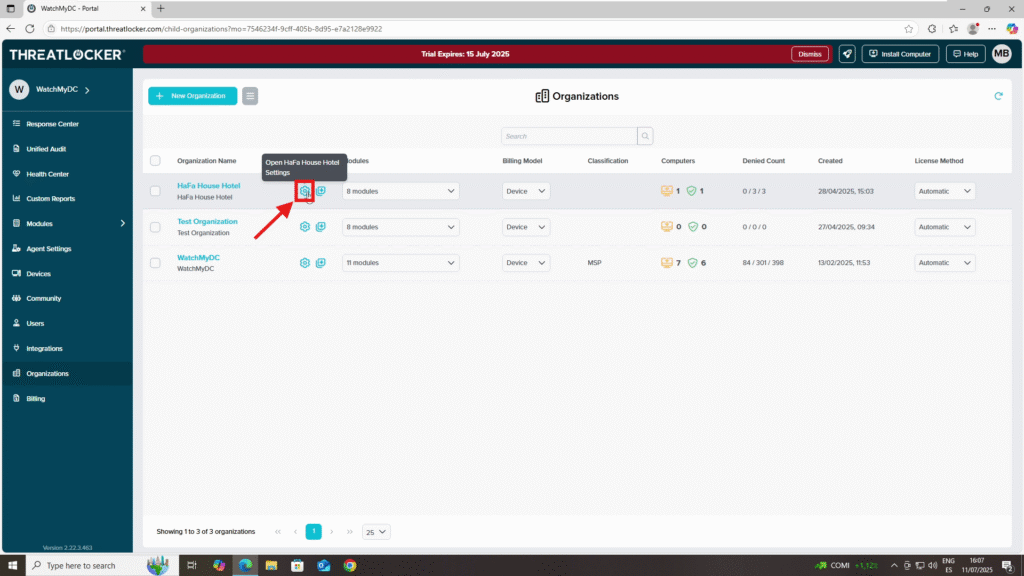
You can edit details such as: Organization Name, Identifier, Time Zone, etc.
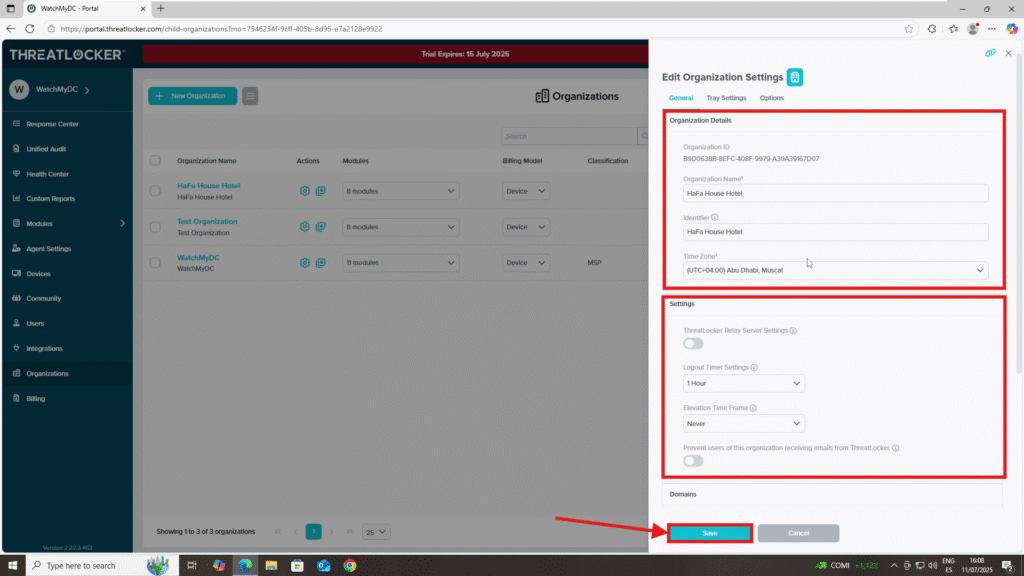
2. Creating a New Organization
In the Organizations section, click New Organization
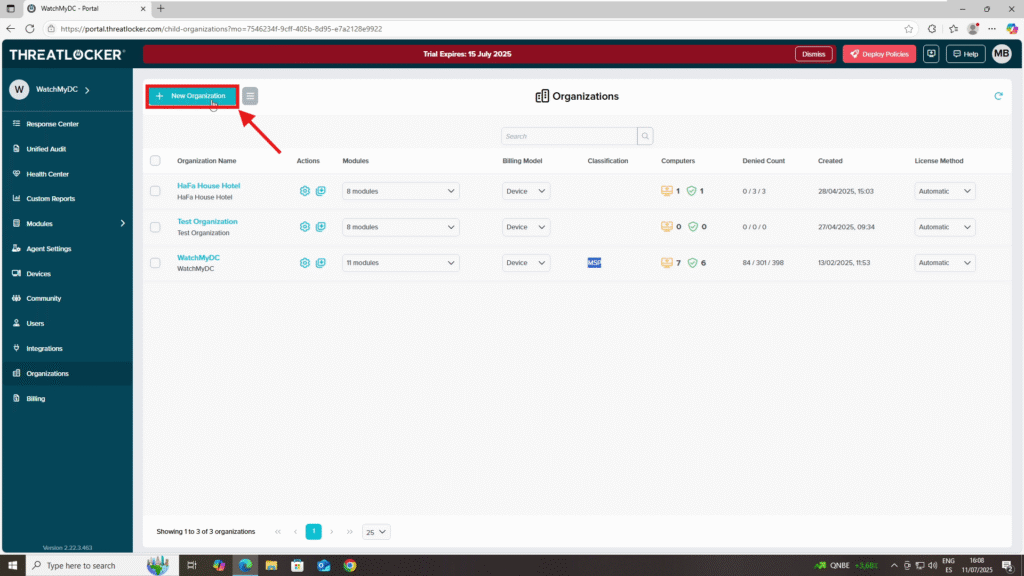
- A Create Organization window will appear
- Fill out the form:
- Organization Details Section
- Organization Name: e.g., Test Org
- Identifier: Custom identifier for the organization
- Time Zone: Select the time zone
- Settings Section
- Enable ThreatLocker Relay Server Settings if needed
- Choose the Logout Timer (e.g., 30 minutes)
- Set the Elevation Prompt to Never or as required
- Organization Details Section
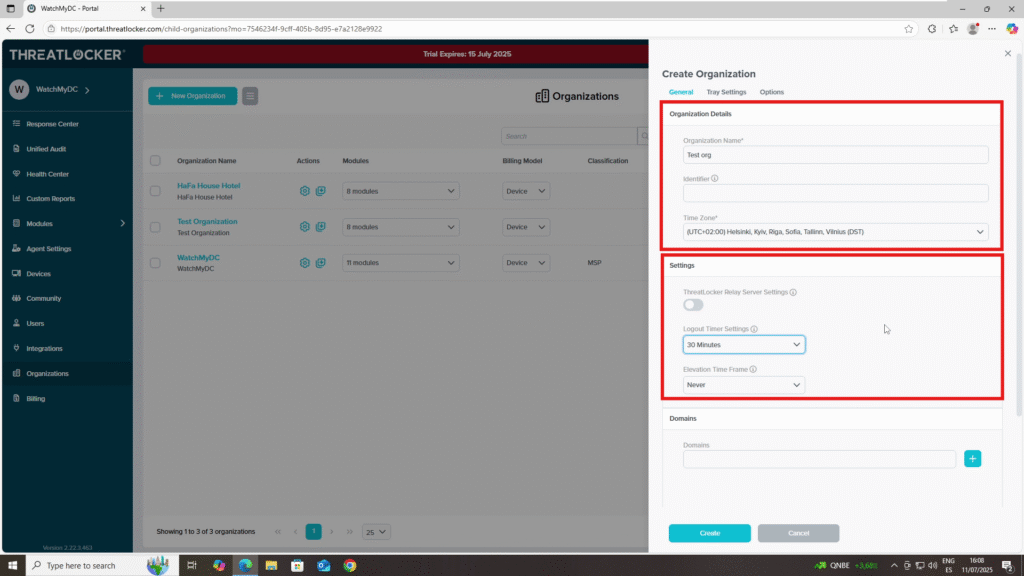
- Domain Section
- Add the organization’s domain
- Once all details are completed, click Create
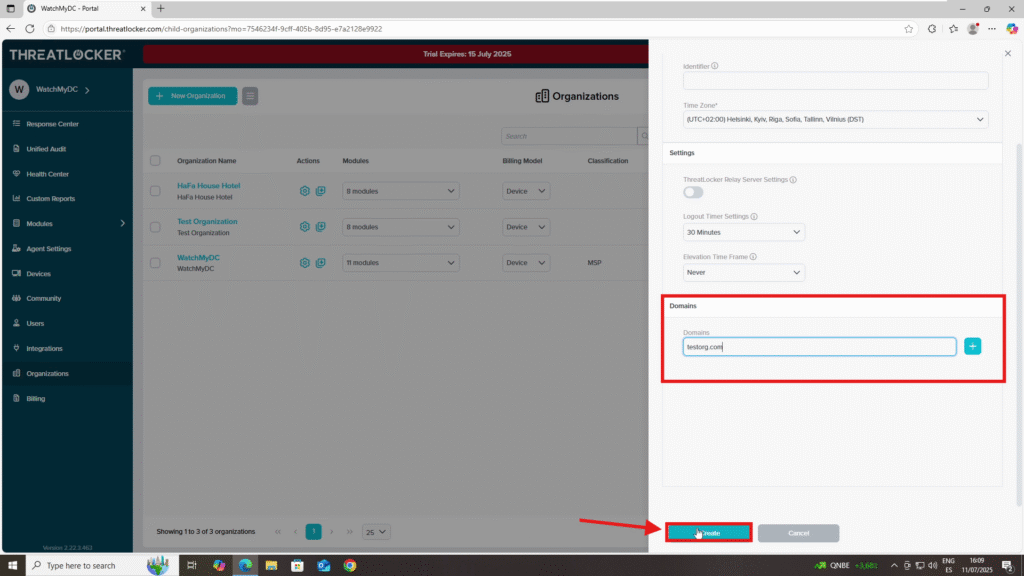
3. Module Settings
- In the Modules column, click the module icon next to an organization
- Enable or disable modules for that organization as needed
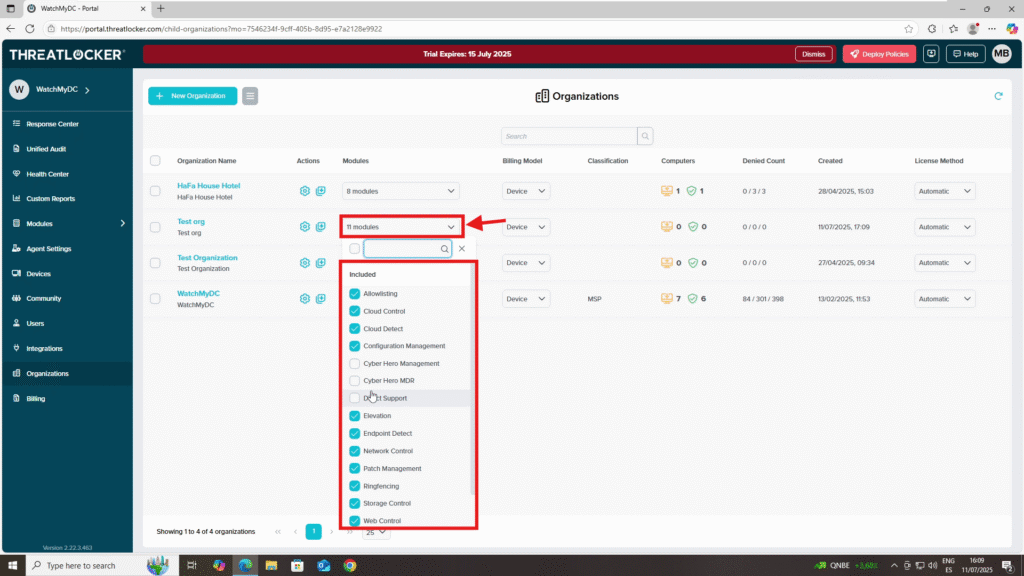
4. Switching Between Organizations
- Click the current organization name in the left sidebar
- A window will appear listing all available organizations
- Click on the desired organization to switch to it
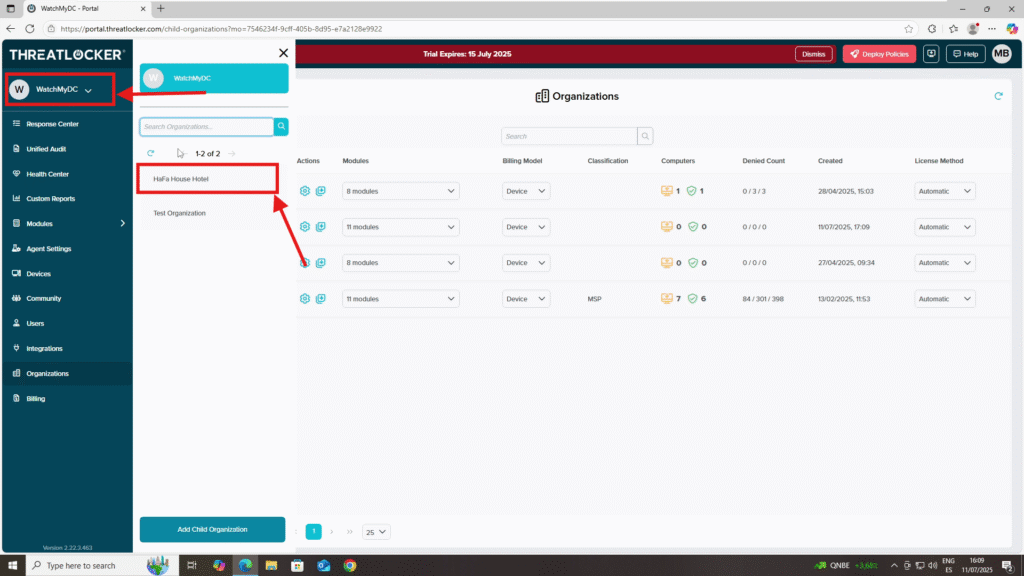
Conclusion
Creating computer groups helps you efficiently manage and assign policies to multiple devices in a structured way. Once configured, these groups streamline security policy deployment and device monitoring.
